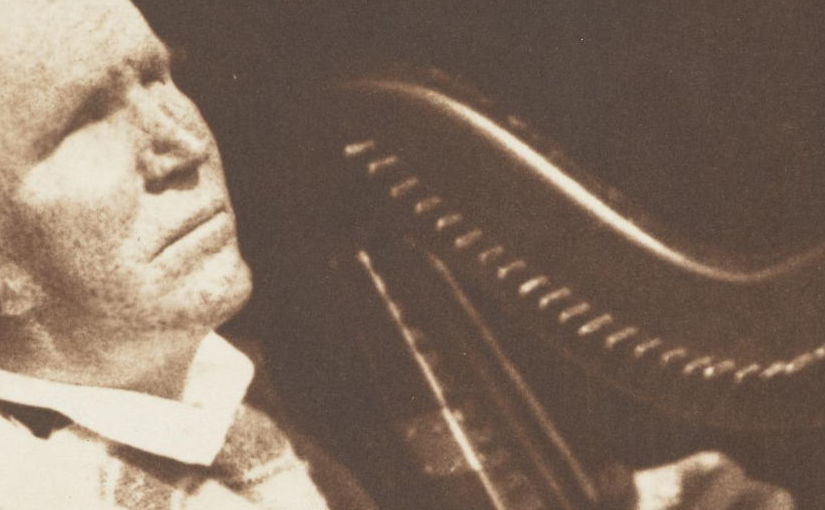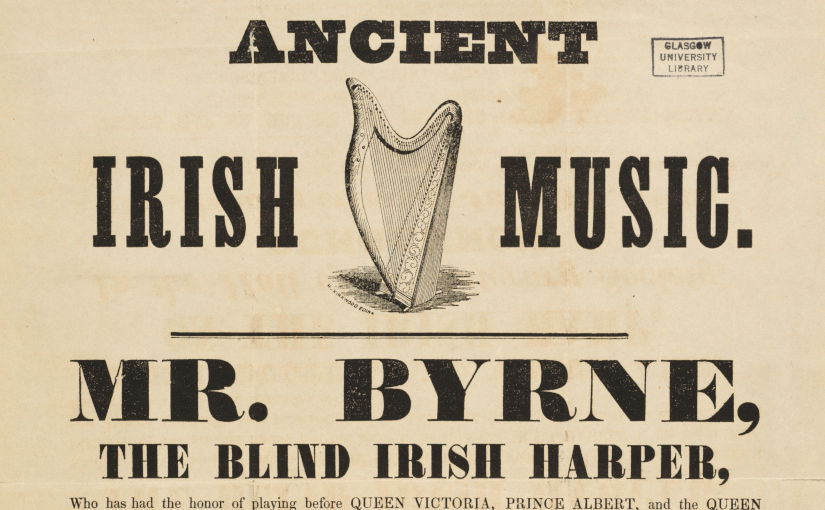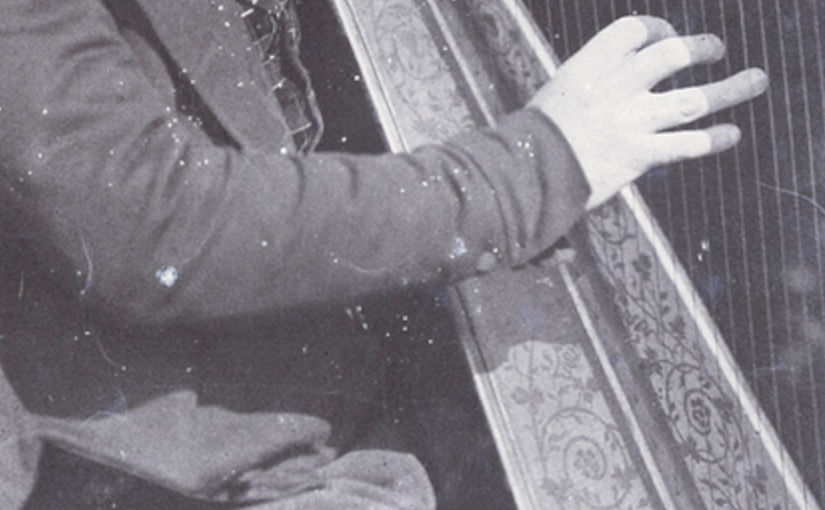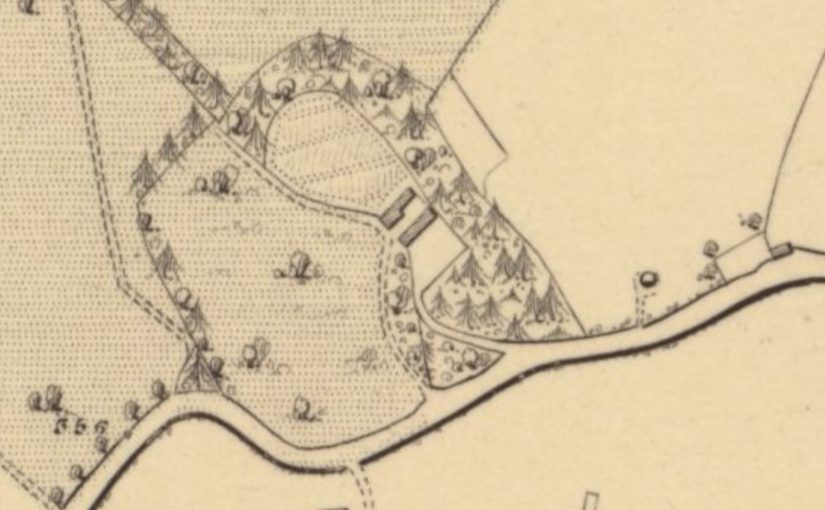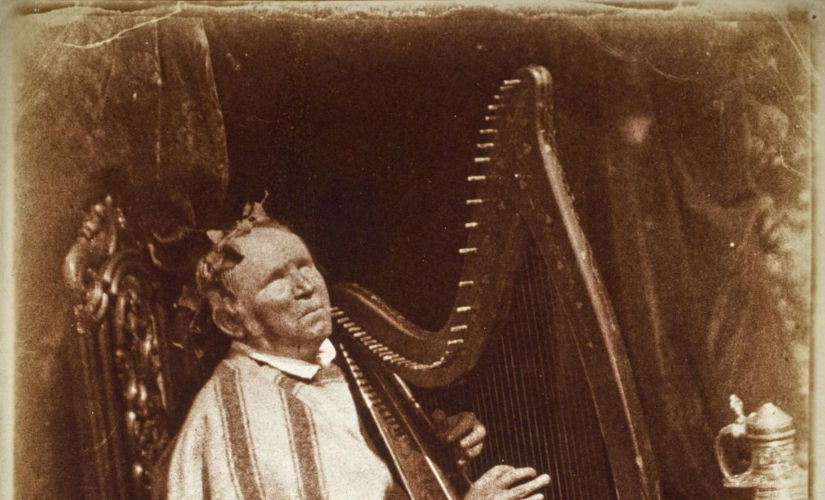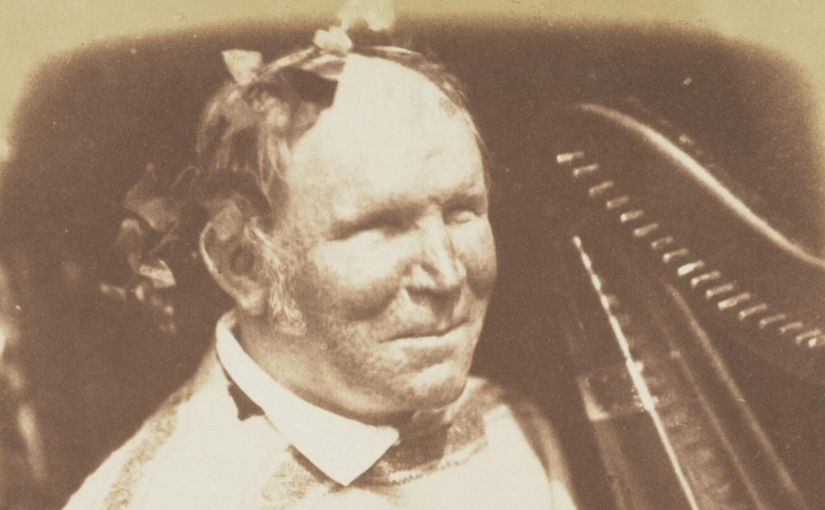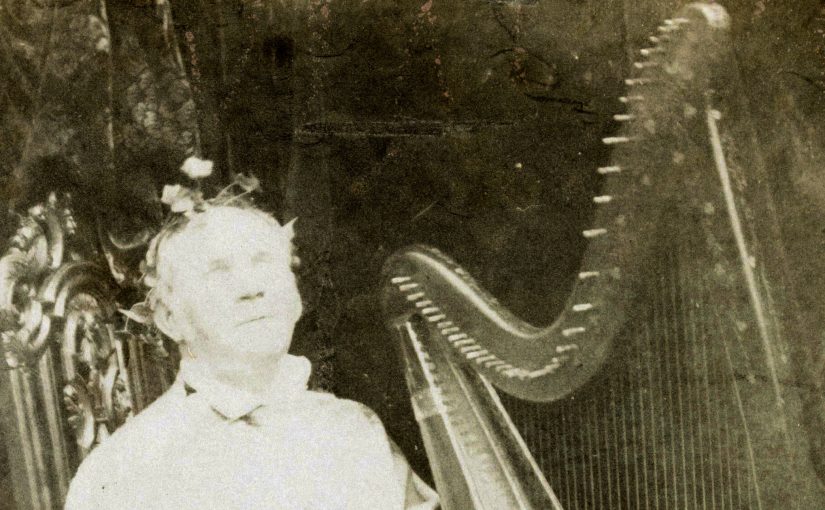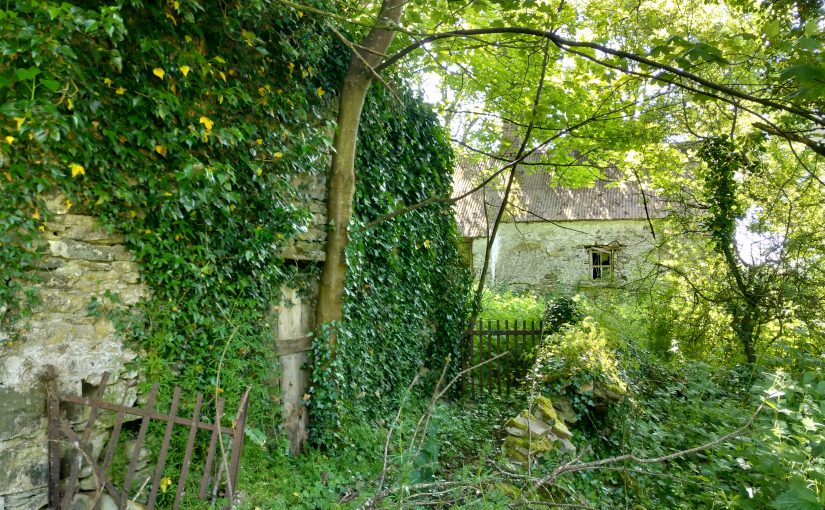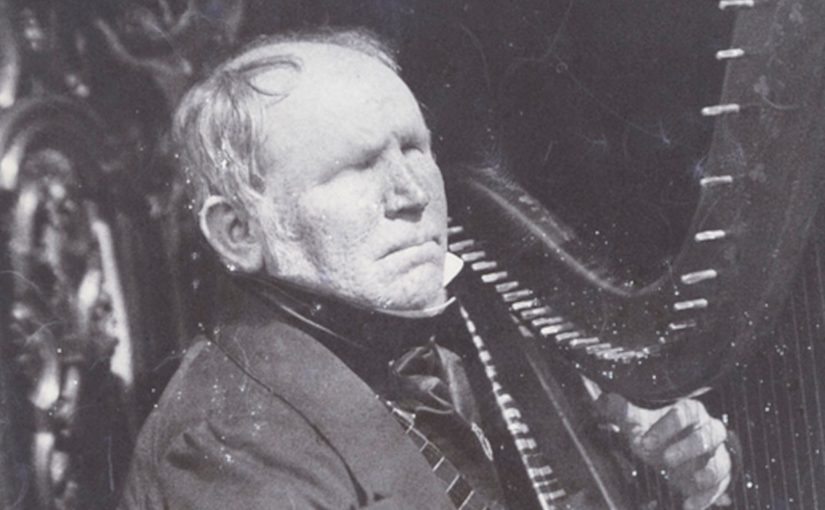Header image courtesy of University of Glasgow Archives & Special Collections,
Papers of Henry George Farmer collection, MS Farmer 332 f5r
This post is part 8 of my series about Patrick Byrne.
Part 1 covers Patrick Byrne’s early years and education, down to his discharge from harp school in 1822.
Part 2, looks at his early career, working for patrons in Ireland and England from 1822 to 1837.
Part 3 covers his first visit to Scotland over the winter of 1837-8, and his tour of Ireland in 1839-40.
Part 4 looks at him playing for Queen Victoria at Windsor Castle, and then touring mostly in Ireland and a bit in England in 1841-4.
Part 5 covers just six months, from when he went to Scotland at the beginning of 1845 until he headed back to Belfast on 25th June, including the Waverley Ball and having his photographs taken.
Part 6 covers the rest of 1845, and the whole of 1846, touring in the north of Ireland and the English midlands.
Part 7 covers Scotland in the first half of 1847, Ireland for the second part of 1847; England in the first part of 1848, and back in Ireland in Autumn 1848.
By the end of 1848, Patrick Byrne was in his early 50s; he was well established as a touring performer in Ireland, Scotland and England, both as a public “celebrity” and with networks of private patrons right up to the top of the social hierarchy.
This post includes two very different but equally interesting episodes in his life. One is his professional tour of the south of England; and the other is when Patrick Byrne met the antiquarian John Bell, who wrote down a load of very useful traditionary information about the Irish harp tradition which Byrne had apparently told to him.
Continue reading Patrick Byrne part 8: Christmas 1848 to July 1849
